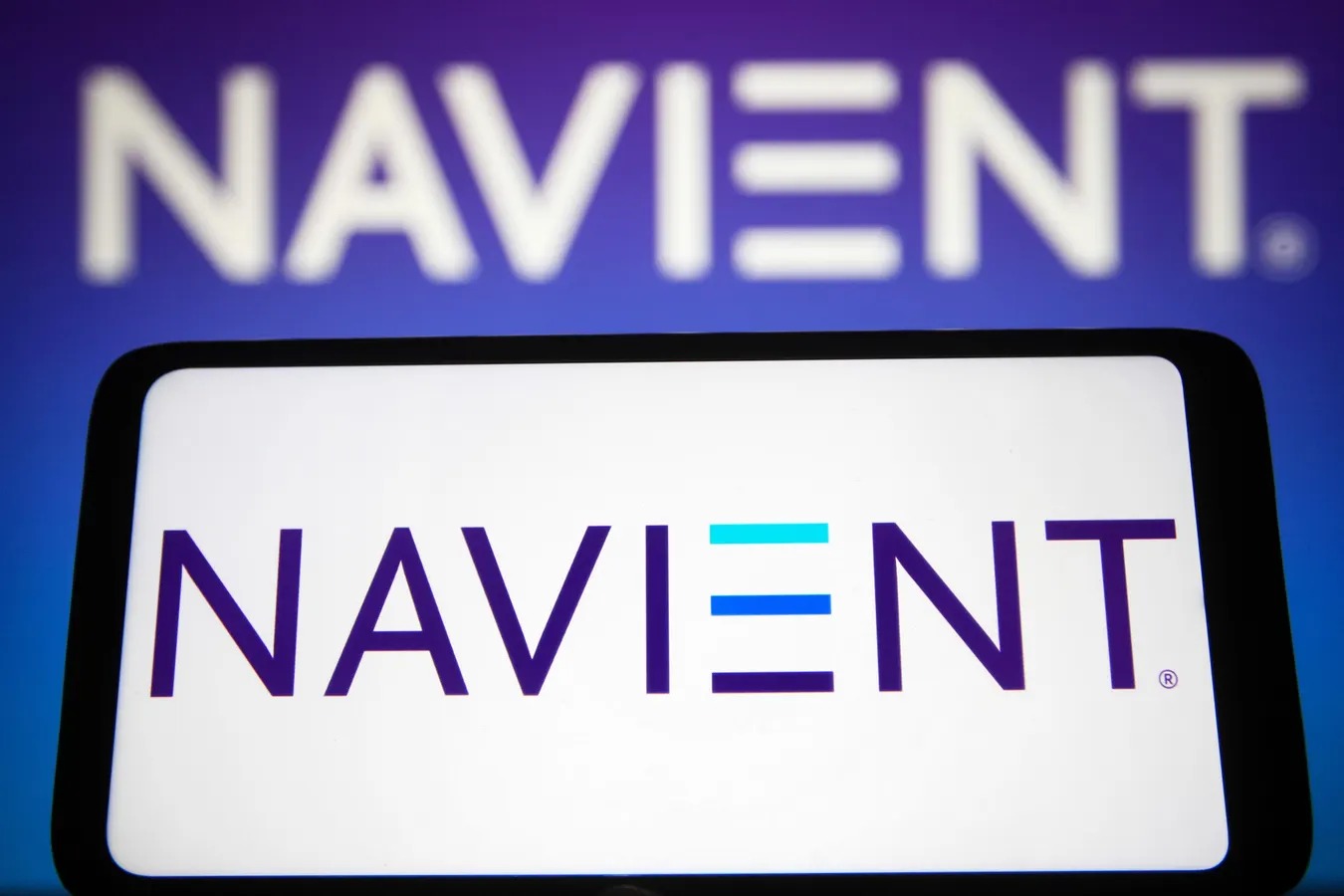

Finance
What Is Navient’s Student Loans Grace Period
Published: February 21, 2024
Learn about Navient's student loan grace period and how it impacts your finances. Understand the options available to manage your student loans effectively.
(Many of the links in this article redirect to a specific reviewed product. Your purchase of these products through affiliate links helps to generate commission for LiveWell, at no extra cost. Learn more)
Table of Contents
Introduction
Understanding Navient’s Student Loans
Navient is a prominent name in the student loan industry, providing a wide range of financial services, including loan servicing, asset management, and business processing solutions. For individuals pursuing higher education, Navient offers various student loan options to help fund their academic endeavors. Understanding the intricacies of Navient's student loans, including the concept of grace periods, is essential for borrowers to effectively manage their financial responsibilities.
Navigating the complexities of student loans can be overwhelming, especially for those new to the process. However, with the right knowledge and guidance, borrowers can make informed decisions that align with their financial goals. In this article, we will delve into Navient's student loans and explore the concept of the grace period, shedding light on its significance and how borrowers can leverage it to their advantage.
As we embark on this exploration, it's important to recognize the pivotal role that student loans play in facilitating access to education for countless individuals. The ability to secure adequate financing can often be the determining factor in pursuing higher education, making student loans a vital resource for many aspiring students. With this in mind, understanding the nuances of Navient's student loans, including the grace period feature, empowers borrowers to effectively manage their financial obligations while striving for academic success.
Understanding Navient’s Student Loans
Exploring Navient’s Financial Offerings
Navient, a leading provider of student loans and related financial services, offers a diverse array of loan options tailored to meet the varying needs of students pursuing higher education. These options encompass both federal and private student loans, providing borrowers with flexibility and choice when it comes to financing their academic pursuits. Understanding the key features and distinctions of Navient’s student loans is crucial for individuals seeking financial support for their educational endeavors.
When considering Navient’s student loan offerings, it’s imperative to distinguish between federal and private loans. Federal student loans, backed by the U.S. Department of Education, often come with fixed interest rates and flexible repayment plans, designed to accommodate the financial circumstances of students. On the other hand, private student loans, offered by financial institutions such as banks or credit unions, may have varying interest rates and repayment terms, dependent on the lender’s policies.
Additionally, Navient provides resources and tools to help borrowers understand the intricacies of student loans, including repayment calculators, budgeting assistance, and loan management guidance. These educational resources empower borrowers to make informed decisions and effectively manage their loan obligations throughout their academic journey and beyond.
It’s important to note that Navient’s commitment to supporting borrowers extends beyond the disbursement of loans. The company also offers loan servicing, which involves managing loan accounts, processing payments, and providing customer support to ensure a seamless borrowing experience. By entrusting their student loans to Navient, borrowers gain access to a comprehensive support system designed to assist them at every stage of the loan lifecycle.
As borrowers navigate the landscape of student loans, understanding the nuances of Navient’s offerings equips them with the knowledge needed to make sound financial decisions. Whether it’s exploring federal loan options or considering the benefits of private loans, borrowers can leverage Navient’s expertise and resources to secure the financial assistance necessary to pursue their educational aspirations.
What Is a Grace Period?
Understanding the Concept of Grace Period in Loan Repayment
A grace period, in the context of loan repayment, refers to a specified duration of time during which a borrower is not required to make payments on the principal amount or interest of the loan. This period typically follows a significant event, such as graduation, leaving school, or a change in enrollment status, and serves as a transitional phase for borrowers as they prepare to enter the repayment stage of their loans.
During the grace period, borrowers are granted the opportunity to solidify their post-education plans, secure employment, and establish a stable financial foundation before commencing regular loan payments. This period of reprieve offers crucial breathing room for individuals transitioning from the academic sphere to the workforce, allowing them to acclimate to their new circumstances without the immediate burden of loan repayments.
It’s important to note that the duration of a grace period can vary depending on the type of loan and the lender’s policies. For federal student loans, the grace period typically lasts six months, providing borrowers with a reasonable timeframe to make necessary arrangements for the next phase of their lives. Private student loans, on the other hand, may offer varying grace period lengths, and it’s essential for borrowers to familiarize themselves with the specific terms outlined in their loan agreements.
During the grace period, interest on certain types of loans may continue to accrue, adding to the overall loan balance. Understanding the implications of interest accrual during this period is crucial for borrowers, as it directly impacts the total amount repaid over the life of the loan. By staying informed about the details of their loans, borrowers can proactively manage their finances and make strategic decisions regarding their repayment strategy.
Overall, the grace period serves as a valuable interim phase that bridges the gap between academic pursuits and the responsibilities of loan repayment. It offers borrowers a window of opportunity to lay the groundwork for their financial future while mitigating immediate financial pressures, ultimately setting the stage for a smoother transition into the repayment phase of their student loans.
Navient’s Student Loans Grace Period
Understanding the Grace Period Offered by Navient
Navient’s student loans, whether federal or private, often come with a grace period that provides borrowers with a vital cushion of time as they transition from their academic pursuits to the commencement of loan repayment. This grace period, a feature of Navient’s loan offerings, aligns with the company’s commitment to supporting borrowers through various stages of their educational and financial journey.
For federal student loans serviced by Navient, the standard grace period typically spans six months, allowing borrowers to prepare for the responsibilities of loan repayment after completing their education or reducing their enrollment status below a certain threshold. During this period, borrowers have the opportunity to explore employment opportunities, establish a budget, and gain financial stability before entering the repayment phase. This valuable window of time empowers borrowers to make informed decisions about their financial future while alleviating immediate repayment pressures.
Similarly, Navient’s private student loans may also offer a grace period, albeit with varying durations depending on the specific terms outlined in the loan agreement. This flexibility caters to the diverse needs of borrowers, recognizing that each individual’s circumstances and post-education plans may differ. By providing a grace period for both federal and private student loans, Navient demonstrates its dedication to empowering borrowers with the necessary resources to navigate the complexities of loan repayment.
Throughout the grace period, Navient continues to support borrowers by offering educational resources, financial management tools, and personalized assistance to help them prepare for the upcoming transition. By leveraging Navient’s expertise and guidance, borrowers can maximize the benefits of the grace period and lay a solid foundation for their financial well-being as they progress into the next phase of their lives.
It’s important for borrowers to stay informed about the specifics of the grace period associated with their Navient-serviced loans, including any implications related to interest accrual and repayment obligations. By understanding the nuances of the grace period, borrowers can effectively utilize this interim period to their advantage, setting the stage for a successful and well-managed repayment journey.
How to Utilize the Grace Period
Maximizing the Benefits of Navient’s Student Loan Grace Period
The grace period accompanying Navient’s student loans presents a valuable opportunity for borrowers to strategically prepare for the transition into loan repayment. By leveraging this interim phase effectively, borrowers can lay the groundwork for a smooth and well-managed repayment journey while establishing a strong financial foundation for the future.
Here are key strategies to make the most of Navient’s student loan grace period:
- Financial Planning: Use the grace period to assess your financial situation, create a budget, and gain a clear understanding of your anticipated income and expenses post-graduation. This proactive approach enables you to make informed decisions about loan repayment and other financial obligations.
- Employment Search: Take advantage of the grace period to explore employment opportunities aligned with your career goals. Securing a job or internship during this time can set the stage for a seamless transition into the repayment phase, providing a source of income to support your financial responsibilities.
- Loan Repayment Research: Use the grace period to research and understand the terms of your student loans, including the specifics of repayment plans, interest rates, and available options for loan consolidation or refinancing. This knowledge empowers you to make informed decisions about managing your loans effectively.
- Financial Literacy Education: Take advantage of resources offered by Navient and other reputable sources to enhance your financial literacy. Understanding concepts such as interest accrual, loan amortization, and debt management equips you with the knowledge needed to navigate the complexities of student loan repayment.
- Debt Reduction Strategies: If feasible, consider implementing strategies to reduce or manage existing debt during the grace period. This may involve creating a plan to address high-interest debt or exploring options to bolster your financial position before entering the repayment phase.
By proactively engaging with these strategies, borrowers can optimize the grace period provided by Navient’s student loans, setting the stage for a well-informed and prepared approach to loan repayment. This proactive stance empowers borrowers to take control of their financial future, mitigate potential challenges, and embark on a successful trajectory toward managing their student loans responsibly.
Conclusion
Navigating Navient’s Student Loans with Confidence
As borrowers embark on their academic and financial journey, the support and resources offered by Navient play a pivotal role in facilitating access to student loans and guiding individuals through the complexities of loan repayment. Understanding the nuances of Navient’s student loan offerings, including the grace period feature, empowers borrowers to make informed decisions and effectively manage their financial responsibilities.
By gaining insight into the concept of the grace period and its significance in the realm of student loans, borrowers can leverage this transitional phase to prepare for the responsibilities of loan repayment. Whether it involves financial planning, employment search, or enhancing financial literacy, the grace period serves as a valuable opportunity to lay the groundwork for a successful and well-managed repayment journey.
Navient’s commitment to supporting borrowers extends beyond the disbursement of loans, encompassing educational resources, loan management tools, and personalized assistance designed to empower individuals at every stage of their loan lifecycle. This comprehensive approach underscores Navient’s dedication to fostering financial well-being and success among borrowers.
As borrowers navigate the landscape of student loans, the grace period offered by Navient represents more than just a temporary reprieve from immediate repayment obligations. It symbolizes a strategic opportunity for individuals to build a solid financial foundation, explore career prospects, and cultivate the knowledge needed to manage their loans effectively.
Ultimately, by harnessing the resources and guidance provided by Navient, borrowers can confidently navigate the transition from student to loan repayment, equipped with the knowledge and tools to make informed financial decisions. The grace period, in conjunction with Navient’s steadfast support, sets the stage for a successful and well-prepared approach to managing student loans, empowering borrowers to embrace their financial future with confidence and resilience.














